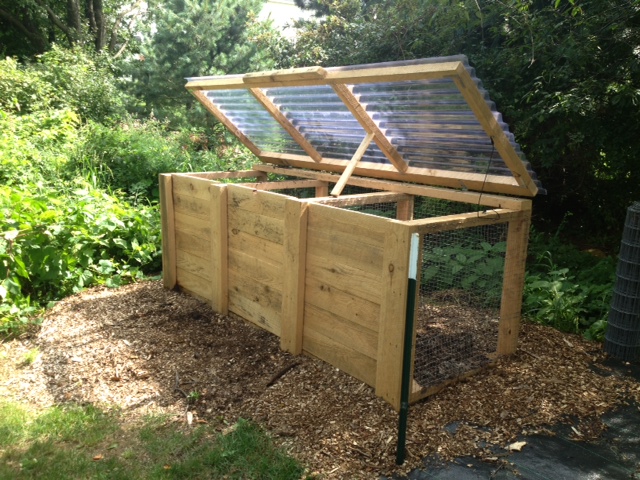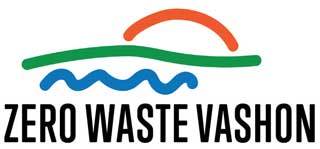
The 5 W’s and 1 H of COMPOST
by Steve Bergman
Who? Compost can be used by anyone wanting to improve soil quality, including gardeners, homeowners, and farmers. Making compost saves having to dispose of unwanted organic materials by residents and businesses.
What? Compost results from decomposition of organic materials by bacteria, fungi, and larger organisms and is rich in humus an earthy-smelling soil conditioner and teaming with life. Not everything from your kitchen or yard should be put in the compost pile, so check the list below.
Where? Compost is best used wherever soil lacks organic matter and lacks optimal physical properties.
When? Turning organic “waste” into compost takes several weeks to a year depending on the method and starting materials.
Why? Compost contains natural fertilizers, allows plants to more effectively utilize nutrients; improves soil tilth (physical condition) structure, and porosity; increases its water retention and groundwater quality, reduces stormwater runoff, and increases plant productivity. Composting protects against soil erosion, destroys or suppresses many soil pathogens, neutralizes toxins, sequesters carbon and reduces methane generation in landfills through diversion. Making compost locally saves on transport costs and the negative environmental impacts of hauling away organic waste as well as eliminating the need for inorganic fertilizers.
How? Compost can be made from local yard clippings, leaves, and food waste using many methods and at many scales from small backyard to large industrial facilities. This page highlights some of our local compost experts and their insights.
Here is the Scoop:
Looking down from above, Vashon Island is green due to our expansive forests and fields. Our native soils were developed on glacial till and are rich in minerals, but most lack enough organic matter needed for fertility. Let’s keep Vashon green by best utilizing our organic “waste” and turning it into beneficial compost for our soils. Our garbage contains as much as 25% food waste and our municipal landfills are filling up. Composting is an important element of environmental stewardship. Adding compost to our soils improves the island’s productivity, draws down CO2 from the atmosphere, sequesters carbon, and doing it locally has many other environmentally friendly benefits. Until we can get collection and composting of organic waste established on the island (like Seattle and other municipalities), we can use kitchen trimmings, grass clippings, leaves, and other organic matter and make compost in the back yard. Here we highlight three of the most popular systems, noting that there are many others available.
Bin Method
Composting materials are contained in a wire bin, a bay with sides, or any number of configurations to support the compost pile. The material is periodically turned for aeration and can be accessed from an open side or door for loading and unloading. Container-based bins can be made of wood, metal or plastic and take different sizes and shapes. They require aeration and moisture maintenance of the pile, either dumping out everything and turning it back inside, or using a pitchfork or specialized auger on the inside. Cube-shaped bins – at least a cubic yard in volume can more reliably achieve the volume needed for the material to heat up, which reduces pathogens and seeds and accelerates decomposition. Whereas several off-the-shelf brands are available for container-based bins, cube-based bin systems are typically custom built and many simple designs are readily available.
Aerated Static Pile
This method consists of a pile with perforated pipe, ductwork or porous materials underneath that allow fresh air to move through the pile. Air can be actively pumped with blowers, or passively using the chimney effect as microbial action heats the pile and pulls in fresh air. Even though the word static is in the name, periodic turning is recommended and will decrease the likelihood of unwanted vermin taking up residence, speed up the process and create a more uniform compost.
Worm Bins
Composting with worms (a.k.a. vermicomposting) is typically done with the common red wiggler worm (Eisenia fetida). This worm’s digestive system converts a wide variety of food waste and other organic materials into a nutrient-rich compost called vermicast or worm castings. Red wigglers thrive in an aerobic environment and are able to process large amounts of food waste and rapidly reproduce in a confined space. Vermicomposting is a “cold” composting process, in contrast to bacterially-based methods that generate heat. Vermicomposting materials (food scraps and bedding) are generally lower in the carbon-to-nitrogen ratio than “hot” compost. Vermicomposting is a relatively slow process, can take up to 6 months for finished worm compost, and does not destroy weed seeds. It provides up to several percent more nitrogen in the final compost than conventional “hot” compost and can be done inexpensively, in a small space, with minimal effort.
Acceptable & Unacceptable Materials
Acceptable materials for your backyard bin or pile: leaves and brush, plant cuttings, grass clippings, fruit and vegetable scraps, breads and grains, coffee grounds and filters, tea bags, eggshells, wood chips, sawdust, wood ash, old potting soil, hair, cut flowers, food-soiled paper (napkins, paper towels).
Don’t add these materials to your compost pile: meat scraps, fish scraps, dairy products, fats or oils, grease, dog feces, kitty litter, weed seeds, charcoal ash, nonorganic materials (plastics, metal, glass), diseased or insect-infested plants.
Selected Resources:
https://pubs.extension.wsu.edu/backyard-composting
https://www.epa.gov/recycle/composting-home
http://compost.css.cornell.edu/science.html
http://cwmi.css.cornell.edu/factsheets.htm
https://attra.ncat.org/product/vermicomposting-the-basics/
http://www.recycle.cc/res-compostsystems.htm
https://www.calrecycle.ca.gov/organics/compostmulch/
https://vric.ucdavis.edu/pdf/compost_rapidcompost.pdf
https://www.cias.wisc.edu/wp-content/uploads/2008/07/artofcompost.pdf
https://ilsr.org/yimby-compost/
https://ilsr.org/rule/compost-amended-soil/washington/
https://mirrormont.org/composting-at-the-pea-patch/
https://www.lesecologycenter.org/programs/compost/
https://joegardener.com/wp-content/uploads/2017/02/JG-Complete-Guide-to-Home-Composting.pdf
https://kcls.bibliocommons.com/item/show/1295237082 (“Easy Compost” by Niall Dunne, 2013, BBG Guides for a Greener Planet), one of the 223 books on compost available through the King County Library System.
